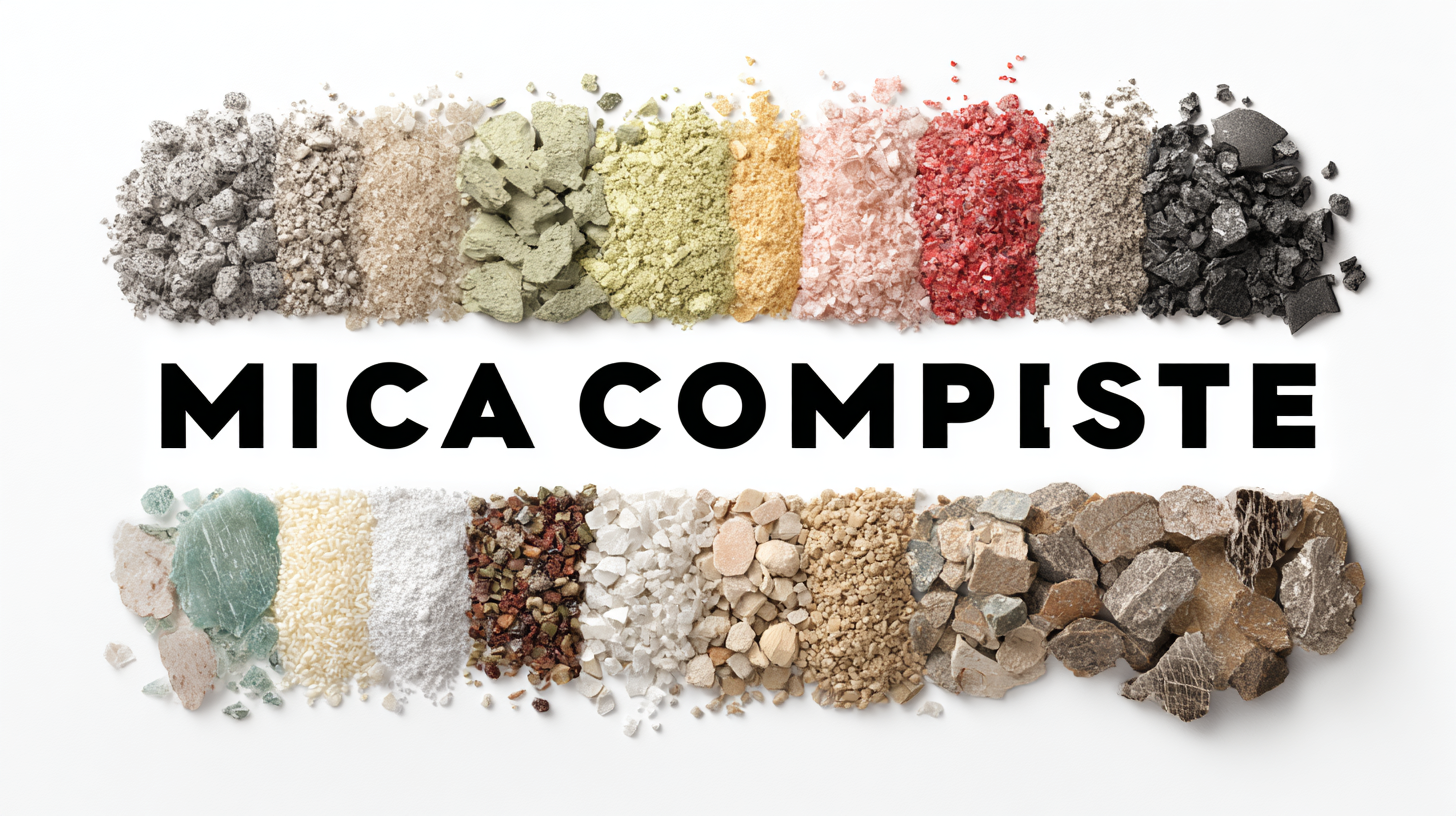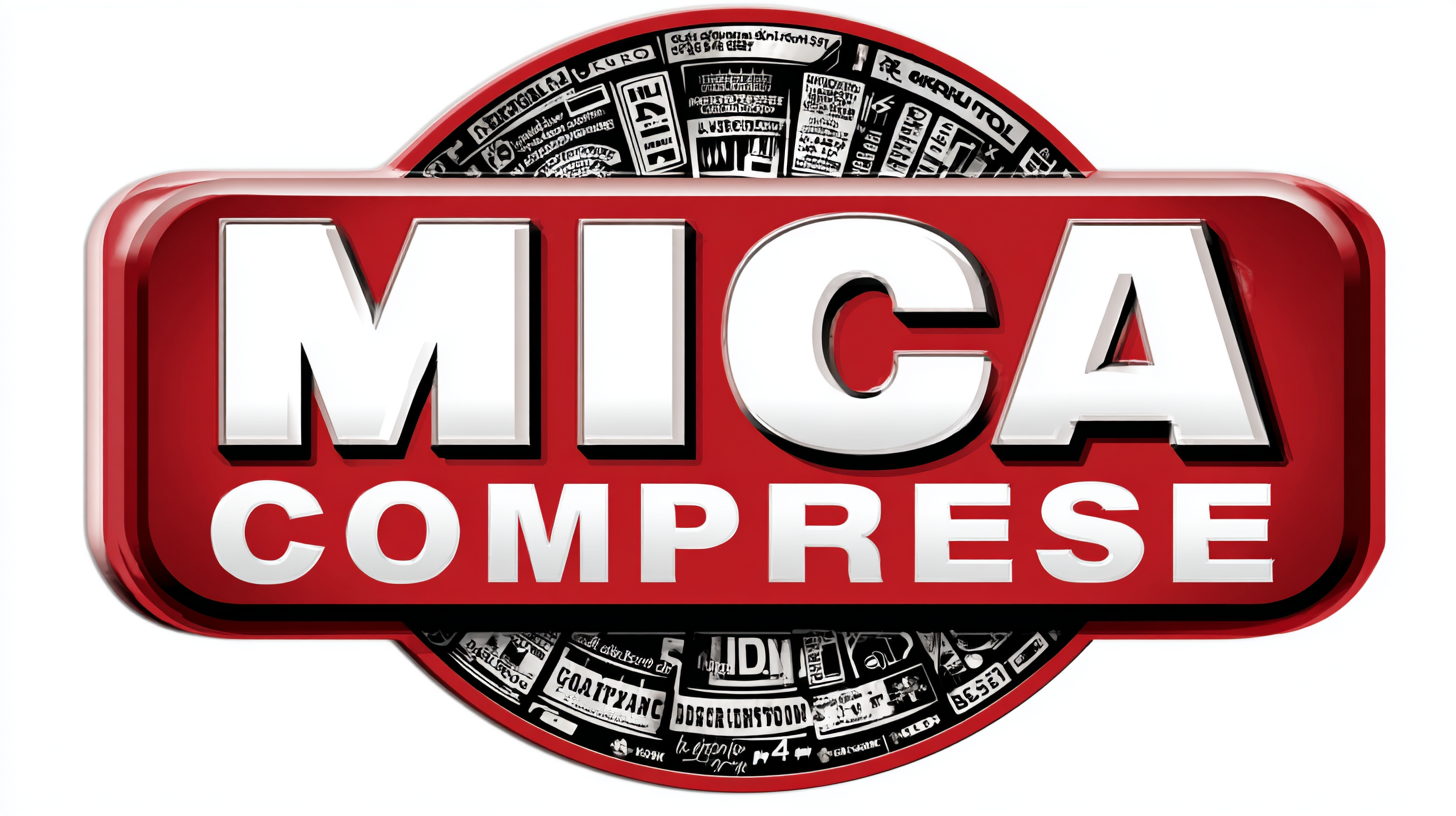QR Code
About Us
Products
Contact Us

Phone

Fax
0086-574-87527773

E-mail

Address
No 432 Zhenhai Middle Road, Luotuo Street, Zhenhai District, Ningbo City, Zhejiang China
In today's competitive business landscape, selecting the right materials is crucial for achieving optimal performance and efficiency. One such material that has gained significant attention is Mica Composite, known for its remarkable properties and versatility across various applications. Whether you are in the construction, automotive, or electronics industry, the choice of Mica Composite can greatly influence the durability and reliability of your products. However, navigating the myriad of options available can be overwhelming.

This guide aims to provide you with essential insights and criteria to help you make an informed decision when selecting the best Mica Composite for your unique business needs. By understanding the key factors that contribute to the performance and suitability of Mica Composite, you can ensure that your selection not only meets your technical requirements but also aligns with your overall business strategy.
Mica composites are engineered materials that combine mica, a naturally occurring mineral, with various resins to create robust and versatile products. These composites are widely used across multiple industries, including automotive, electronics, and construction, due to their outstanding thermal stability, electrical insulation properties, and mechanical strength. According to a recent market analysis by Mordor Intelligence, the mica composite market is projected to grow at a CAGR of 6.2% from 2021 to 2026, indicating an increasing demand driven by technological advancements and innovative applications in these sectors.
In the automotive industry, mica composites are valued for their lightweight and heat-resistant properties, making them ideal for applications such as electrical insulation in motors and electronic components. The electronics sector benefits from mica's excellent dielectric properties, enabling the production of high-performance insulators and capacitors. Moreover, the construction industry utilizes mica composites in fire-resistant panels and insulation materials, enhancing safety and energy efficiency in buildings. A report from Research and Markets highlights that the demand for mica composites in construction is anticipated to reach 1.2 million tons by 2025, showcasing their critical role in modern infrastructure development.
 When selecting mica composites for your business, several key factors should be taken into account. First and foremost is the application of the composite material. Mica composites are widely used in the electrical, automotive, and construction industries due to their excellent thermal and electrical insulation properties. According to a market research report published by Grand View Research, the global mica market is expected to reach USD 1.5 billion by 2027, driven by the growing demand in these sectors. Understanding your specific application will help you choose the right type of mica composite that meets your performance requirements.
When selecting mica composites for your business, several key factors should be taken into account. First and foremost is the application of the composite material. Mica composites are widely used in the electrical, automotive, and construction industries due to their excellent thermal and electrical insulation properties. According to a market research report published by Grand View Research, the global mica market is expected to reach USD 1.5 billion by 2027, driven by the growing demand in these sectors. Understanding your specific application will help you choose the right type of mica composite that meets your performance requirements.
Another critical factor is the grade and quality of the mica. High-grade mica not only improves the durability of the composite but also enhances its properties significantly. For instance, the use of phlogopite mica can improve thermal stability, making it suitable for more demanding applications. It is recommended to review certifications and testing results from suppliers to ensure that the mica meets industry standards, such as ASTM and ISO certifications.
Tip: Always ask for sample materials when considering a new supplier. This allows you to test the mica composite in your own production environment before making a large investment.
Tip: Consider the supplier's reputation and customer service. A reliable supplier will provide not only high-quality products but also support for technical inquiries and after-sales service, ensuring you get the most from your investment in mica composites.
When selecting a mica composite, evaluating quality is crucial for ensuring optimal performance in your applications. High-quality mica composites are characterized by their purity, particle size, and processing techniques. A report by the Global Mica Network indicates that composites with a high mica content (above 95%) exhibit superior thermal and electrical insulation properties, making them ideal for industries like electronics and automotive. Additionally, smaller particle sizes can enhance flexibility and improve the overall aesthetics of products, particularly in cosmetic applications.

Moreover, the manufacturing process can significantly impact the quality of mica composites. According to the Research and Markets 2023 report, composites produced through advanced milling techniques retain better structural integrity and have a consistent particle size distribution. This consistency ensures that the end products achieve the desired properties, reducing the likelihood of defects or failures in critical applications. Businesses should also consider the certifications of mica suppliers, such as ISO and REACH compliance, which signal adherence to international quality and safety standards.
When budgeting for mica composites in your supply chain, it's essential to weigh the cost against the value they bring to your business. The global mineral fillers market, projected to be valued at USD 28.4 billion by 2025, highlights the increasing demand for high-quality materials, pushing companies to consider both the financial implications and the benefits of using mica composites. These substances not only enhance the aesthetic appeal of products but also contribute to their overall performance.
**Tip 1:** Evaluate your specific needs before making a purchase. Consider factors such as the intended application, the desired effect (e.g., shimmer or durability), and your end product’s regulatory compliance. This will help ensure that you invest in mica composites that align perfectly with your business objectives.
**Tip 2:** Stay informed about the ethical sourcing of materials. Recent revelations about the conditions under which mica is mined, particularly in remote regions, underscore the importance of choosing suppliers who prioritize sustainability and social responsibility. This commitment not only bolsters your brand’s reputation but also resonates with consumers looking for ethical products.
In balancing cost and value, remember that investing in higher-quality mica composites might initially seem like a larger expense, but it can lead to enhanced product performance and customer satisfaction in the long run.
When it comes to mica composite production, Chinese manufacturers stand out as global leaders, largely due to their advanced technology and vast resource availability. According to a recent report from Global Industry Analysts, the mica composite market is expected to reach $1.8 billion by 2026, with Asia-Pacific, led by China, contributing significantly to this growth. The country's dominance in mica composite production can be attributed to its robust supply chain and ability to produce high-quality products at competitive prices.
Furthermore, data from the Mica Market Study indicates that China accounts for nearly 40% of the world's mica supply, showcasing its significant role in the industry. The country's extensive mining operations and refined processing techniques ensure that it can meet the increasing global demand for mica composites, especially in industries like electronics, automotive, and cosmetics. As businesses seek sustainable and high-performance materials, sourcing from Chinese manufacturers not only guarantees quality but also contributes to the overall efficiency of the supply chain.


0086-574-87527773


No 432 Zhenhai Middle Road, Luotuo Street, Zhenhai District, Ningbo City, Zhejiang China
Copyright © 2015-2024 Ningbo Nafty Sealing Materials Co., Ltd. All Rights Reserved.
| | | XML | Privacy Policy |
TradeManager
Skype
VKontakte
